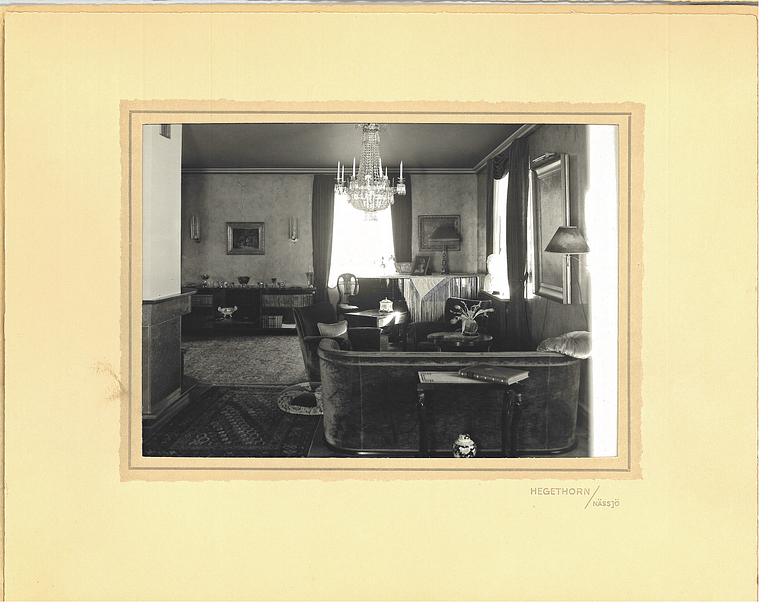Axel Einar Hjorth
an ebonised oak Swedish Grace tiled top table, Nordiska Kompaniet 1931. Tile top by Edgar Böckman.
Ebonised base, legs with carved decoration of atlants, the tiled top with geometrical decoration in black and yellow, signed EB. 84 x 35 cm, maker's metal label, height 60 cm.
Provenance
Fredrik Anderzon, manager of the brewery Nässjö Bryggeri 1936-1964. He had a modernist summerhouse designed for him in 1936. These pieces of furniture formed part of the interior decoration.
More information
This table bears close relationship to the model 'Caesar' by Hjorth which for instance were included in the 1929 World's Fair in Barcelona. It appears that pieces of furniture that have been made to order for a specific client have not been given names in the Nordiska Kompaniet archives.
Designer
Axel Einar Hjorth is considered one of Sweden's most significant furniture designers during the 1920s and 30s. Hjorth's early employers included Svenska Möbelfabrikerna in Bodafors and the Stockholm Crafts Association. The big breakthrough came as chief architect for Nordiska Kompaniet, a position he took up in 1927 and held until 1938. Hjorth's first major assignment was the Nordiska Kompaniet's lavish stand at the World Exhibition in Barcelona in 1929, to then participate in several major international exhibitions during the following decade. In 1929, Hjorth also breaks new ground and designs the first series of rustic furniture in stained pine, the so-called sports cabin furniture that was named "Lovö", "Utö" and "Sandhamn" after the islands in the Stockholm archipelago.
Read more
















































































































